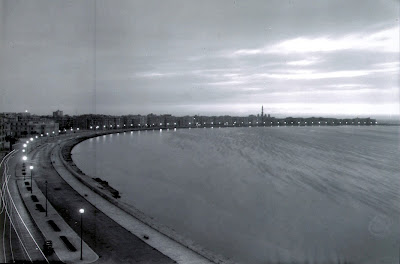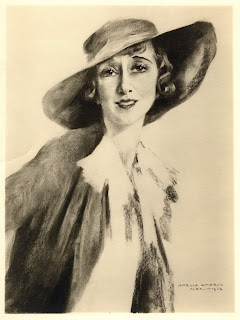 |
| Nanos Valaoritis depicted on the cover of Pan Daimonium, published in 2005. |
In an earlier post this year about
Sterling Morrison, among other things, I mentioned Nanos Valaoritis whom I got to know some years ago in connection with my research into Lawrence Durrell. Nanos knew Durrell in Greece in 1939; he also knew Henry Miller then; and in Miller's
Colossus of Maroussi, which ends with a terrific letter by Durrell describing George Katsimbalis crowing from the Acropolis at dawn and waking every cock in Attica, Nanos was there and has told me all about it. Nanos is a monument, Nanos is memory, and Nanos is a beautiful man, always fascinating, always a pleasure.
So I was delighted to come across
this video of Nanos being interviewed about poetry and language in his Athens flat, seeing him in that room where I have often sat, a room almost impossible to navigate for the piles of books and papers, with Nanos gently holding forth in the middle of it all.
 |
| Nanos Valaoritis interviewed in his Athens apartment about language and poetry. |
Part of the magic of that room is that while Nanos is sitting there he is capable of reaching out his hand into the seeming chaos around him and plucking from towering and tumbling stacks of books and papers, from the scattered debris all over the floor, exactly the item he is looking for.
This video, though I have no idea what it is meant to be about, nevertheless gives a survey of Nanos in his kingdom.
After first meeting Nanos I wrote an article about him in the autumn 2006 number of
The Anglo-Hellenic Review, which I also used to initiate the entry for Nanos Valaoritis in Wikipedia. The article follows and takes up the rest of this post.
*
Nanos Valaoritis is one of the most distinguished writers in Greece
today. He has been widely published as a poet, novelist and playwright
since 1939, and his correspondence with George Seferis (
Allilographia
1945-1968, Ypsilon, Athens 2004) has been a bestseller. Raised within a
cosmopolitan family with roots in the Greek War of Independence but
twice driven into exile by events, Valaoritis has lived in Greece,
England, France and the United States, and as a writer and academic he
has played a significant role in introducing the literary idioms of each
country to the rest. The quality, the international appeal, and the
influence of his work has led Valaoritis to be described as the most
important poet of the Hellenic diaspora since Constantine Cavafy.
Valaoritis was born to Greek parents at Lausanne in Switzerland in
1921 but grew up in Greece where he studied classics and law at Athens
University. He was also writing poetry, and in 1939 when he was barely
eighteen, he saw himself published in the pages of George Katsimbalis’
review
Nea Grammata alongside contributions from Odysseus Elytis and
George Seferis, and was immediately taken into their literary circle. It
was an ominous yet heady time, those early months of the war, during
which Valaoritis was witness to the seminal encounter of Seferis and
Katsimbalis with Henry Miller and Lawrence Durrell, which was to
resonate within both Greek and Anglo-Saxon literature for years to come.
In 1944 Valaoritis escaped from German-occupied Greece across the
Aegean to Turkey and from there through the Middle East to Egypt, where
he made contact with Seferis who was serving the Greek government in
exile as First Secretary of the Greek Legation in Cairo. In 1944, at the
instigation of Seferis, Valaoritis went to London to develop literary
links between Greece and Britain. He met T S Eliot, W H Auden, Dylan
Thomas and Stephen Spender, and he worked for Louis MacNeice at the BBC.
As well as studying English literature at the University of London, he
translated modernist Greek poets, among them Elytis and Embirikos, and
contributed to Cyril Connolly’s
Horizon and to John Lehman’s
New
Writing. His own first volume of collected poems,
E Timoria ton Magon
(
Punishment of Wizards), with decorations by John Craxton, was published
in London in 1947. He paved the way for Seferis’ success in the
English-speaking world by editing and translating, along with Durrell
and Bernard Spencer, Seferis’
King of Asine which was published in 1948
to enthusiastic reviews.
 |
| The King of Asine by George Seferis was translated from the Greek into English by Lawrence Durrell, Bernard Spencer and Nanos Valaoritis. |
Then in 1954 he moved to Paris where, as well as studying Mycenaean
grammar at the Sorbonne, he was prominent among surrealist poets under
André Breton, and where also he met his wife Marie Wilson, the American
surrealist painter.
In 1960 Valaoritis returned to Greece, and between 1963 and 1967 he
was publisher and chief editor of the Greek avant-garde literary review
Pali. But when the junta came to power in 1967, he felt he had no choice
but to go into voluntary exile, and in 1968 he went to America where he
became professor of comparative literature and creative writing at San
Francisco State University, a position he held for twenty-five years.
A self-described surrealist, Valaoritis sometimes creates a sense of
carnival in his work through parody, pastiche and absurdity. But the
bracket can be misleading, for surrealism alone fails to convey the
depths of his mind and the richness of his work. As in his photographs
so in his poetry you see at once the mage and the pirate, or the
detached Olympian with an outsider’s bemusement yet a man who can also
be intensely lyrical and sensual, as in these lines from
Instead of
Birds of Clouds:
I filled you once and the sea was born
Then I emptied you and the sky
was born
The starry sky and the blue-black sky
The sky of dreams
instead of birds of cloud.
Once again Nanos Valaoritis lives in Greece, where he has co-edited
the literary review
Synteleia (
End of the World) and now,
optimistically, its successor
Nea Synteleia (
New End of the World) and
has published a remarkable body of work, including essays, translations,
anthologies and books of poetry, short stories, a novella and four
novels variously in Greek, English and French. His most recent novel,
the bestselling
Broken Arms of the Venus de Milo (Agra, Athens 2002, and
soon to be published in France), is a literary and historical romp
which has a basis in a true family story, for the arms of the famous
Venus were lost at sea when a French naval vessel stole the statue from
an ancestor of Valaoritis, a Greek who was the chief dragoman of the
Ottoman navy. Valaoritis’
Anthology of Modern Greek Poetry, co-edited
with Thanasis Maskaleris (Talisman, New Jersey 2003) is encompassing and
commanding, an invaluable contribution to the dissemination of Greek
poetry throughout the English-speaking world, while
Pan Daimonium, his
latest volume of poetry (Philos Press, Lacey, Washington State 2005)
shows him as playful, wise and enigmatic as ever.
 |
| Nanos at home in Athens. |
In 2004 the Athens Academy of Letters and Science awarded Nanos
Valaoritis the prestigious prize for poetry in recognition of his life’s
work, and the President of Greece presented him with the Gold Cross of
Honour, given for his services to Greek Letters. And still he writes,
explaining why he does so in this poem taken from
Pan Daimonium and
called
Every Night I Dream.
Every night I dream of great poetry
Quite different from mine
Or what
I will ever write
And yet – every night I dream
Of this very different
poetry
Composed of lines so solid
So dense and grainy
They could have
been made of granite I ask myself – what is their subject
What do they
say these marvellous lines
Which to behold – will leave you aghast
They’ll take your breath away
But – however – in any case – I’m sorry to
say
Impossible to guess what it’s all about
And I have tried and tried,
believe me,
And puzzled over these lines
Day after day – and in the
night
They keep on coming back
With new earthshaking and tremendous
Messages – of great import
That everyone should hear
But not a single
word remains
When I open my eyes – they’re gone
They vanish in pure
daylight
These huge edifices – those titanic
Workings of each night.

































